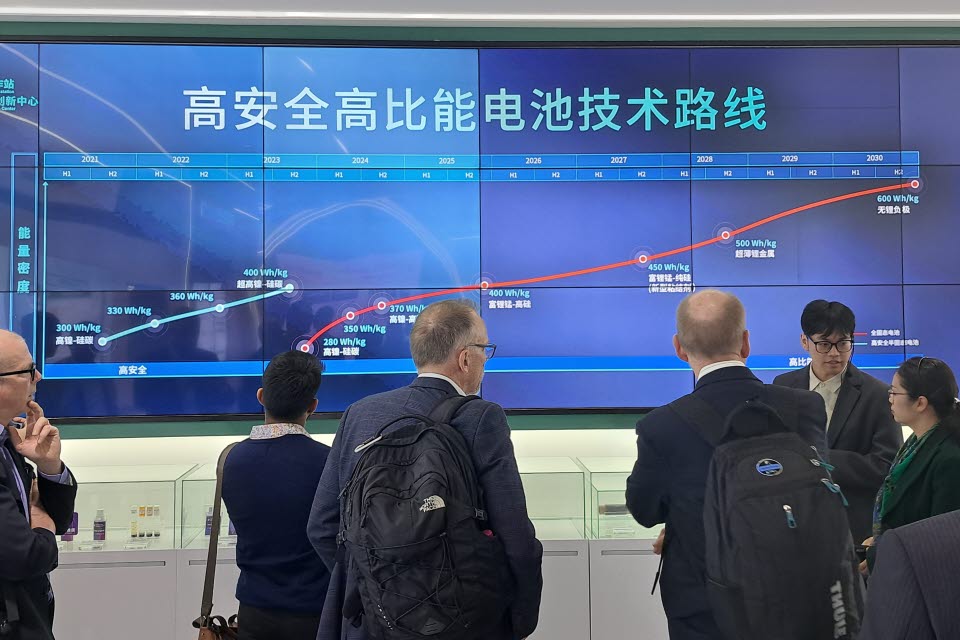China one step ahead when it comes to electrification

Lightning-fast technological development, smart battery management solutions and close links between research, innovation and production. These are some of the strongest impressions formed from a study trip to China.
In November 2023, 17 researchers and representatives of vehicle manufacturers and logistics companies boarded a plane to Shanghai for a week-long study visit to look at electrification and battery swapping systems for heavy vehicles. Arne Nåbo, research leader, and Philip Linné, researcher, participated from VTI.
The group travelled around vehicle manufacturers, battery companies and development centres by bus, plane and high-speed train travelling at 350 kilometres per hour. This visit was part of the Sweden-China Bridge project, which aims to increase the exchange of knowledge on the transport system between the countries.
Arne Nåbo, who recently completed a project on battery swapping in Sweden, gained new insights into aspects such as battery management at Chinese companies. Every battery in the system can have its own identity there, and be connected to a virtual battery management system. This keeps track of everything from charging and payment to function and the need for servicing.
When battery performance drops, it’s no longer used for vehicles but can be used in battery storage systems that are used to stabilise the electricity system as a whole.
“It was fascinating to see how much they were able to keep track of every battery. The system also allows the batteries in a battery swapping station to be used for two purposes: for charging vehicles, and for services aimed at supporting the power grid.
China is a world leader in terms of both battery swapping systems and the electrification of the transport system as a whole. Nine out of ten of all the electric trucks in the world are produced in China, and more than nine out of ten of all electric buses are there, to name but a couple of examples. The transformation is huge and taking place at a rapid pace. One company that was visited went from design to production in just over two years.
Important impressions were formed during the trip, too: the close links between electrification and automation, the link between the transport system and society’s power system, and the rapid pace of technological development. The next generation of battery swapping systems will be cheaper, faster and more automated and offer new battery types.
“It was interesting, too, to see the link between research, innovation and production. When an innovation was put into production and the manufacturer started making money, some of the profits were channelled back into research,” says Arne Nåbo.
He reckons that Sweden, and the entire Western world, has a lot to learn from China.
“The country is a one-party state and has a very different political system to our own. But when it comes to electrification, there are still a lot of things we could do in much the same way,” he says, adding that it’s important to maintain collaboration with the academic community.
The academic element of the Sweden-China Bridge 2.0 project is being funded by the Swedish Transport Administration and coordinated by Halmstad University. The project is ongoing from January 2023 to December 2025.
Text: Mikael Sönne
Translation: CBG
Don't miss out on VTI's news – subscribe now!
Stay informed with the latest research and news from VTI. Sign up for newsletters, sent by e-mail four times a year.
